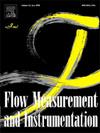基于多方法融合的燃料电池汽车超高速电动空压机降噪优化
IF 2.7
3区 工程技术
Q2 ENGINEERING, MECHANICAL
引用次数: 0
摘要
超高速电动空压机(SHSEAC)的运行会产生强烈的湍流气流和噪音,严重降低了用户的舒适度。现有的噪声研究主要集中在低速压缩机上,未能解决SHSEAC独特的结构、流动和声学特性。本文采用计算流体力学-计算气动声学(CFD-CAA)耦合仿真方法,从内部流动特性出发,对SHSEAC产生的气动噪声进行了改进。首先,建立了SHSEAC的数值模型,并通过怠速、额定和峰值工况(分别对应34000 rpm、86500 rpm和95000 rpm)下的实验验证了模型的准确性。其次,提出一种基于pareto的多目标优化方法,对结构进行优化,同时改善内部流场和声场;耦合仿真结果表明,优化后的结构改善了两级之间的气流,减小了两级之间的湍流。在34000 rpm、86500 rpm和95000 rpm时,距离边界1m处SHSEAC的平均噪声级(SPL)分别降低了7.85%、4.45%和5.15%。本文章由计算机程序翻译,如有差异,请以英文原文为准。
Optimization of noise reduction for ultra high speed electric air compressor in fuel cell vehicles based on multi method fusion
Operation of super-high-speed electric air compressors (SHSEAC) induces intense turbulent airflow and noise, significantly degrading user comfort. Existing noise studies, primarily focused on low-speed compressors, fail to address SHSEAC's distinct structural, flow, and acoustic characteristics. In this paper, aerodynam-ic noise generated by the SHSEAC is improved based on internal flow performance using a coupled computational fluid dynamics-computational aeroacoustic (CFD-CAA) simulation method. Firstly, a numerical model of SHSEAC was established, and the accuracy of the model was verified through experiments under idle, rated, and peak operating conditions (corresponding to 34000 rpm, 86500 rpm, and 95000 rpm, respectively). Secondly, propose a multi-objective optimization approach (MOOA)-Pareto-based to structure optimization is performed to improve both internal flow and acoustic field. The coupled simulation results indicate that the optimized structure improves the airflow and reduces turbulence between the two stages. The mean noise level (SPL) of the SHSEAC at 1m away from the boundary is minimized by 7.85 %,4.45 %, and 5.15 % at 34000 rpm, 86500 rpm, and 95000 rpm, respectively.
求助全文
通过发布文献求助,成功后即可免费获取论文全文。
去求助
来源期刊

Flow Measurement and Instrumentation
工程技术-工程:机械
CiteScore
4.30
自引率
13.60%
发文量
123
审稿时长
6 months
期刊介绍:
Flow Measurement and Instrumentation is dedicated to disseminating the latest research results on all aspects of flow measurement, in both closed conduits and open channels. The design of flow measurement systems involves a wide variety of multidisciplinary activities including modelling the flow sensor, the fluid flow and the sensor/fluid interactions through the use of computation techniques; the development of advanced transducer systems and their associated signal processing and the laboratory and field assessment of the overall system under ideal and disturbed conditions.
FMI is the essential forum for critical information exchange, and contributions are particularly encouraged in the following areas of interest:
Modelling: the application of mathematical and computational modelling to the interaction of fluid dynamics with flowmeters, including flowmeter behaviour, improved flowmeter design and installation problems. Application of CAD/CAE techniques to flowmeter modelling are eligible.
Design and development: the detailed design of the flowmeter head and/or signal processing aspects of novel flowmeters. Emphasis is given to papers identifying new sensor configurations, multisensor flow measurement systems, non-intrusive flow metering techniques and the application of microelectronic techniques in smart or intelligent systems.
Calibration techniques: including descriptions of new or existing calibration facilities and techniques, calibration data from different flowmeter types, and calibration intercomparison data from different laboratories.
Installation effect data: dealing with the effects of non-ideal flow conditions on flowmeters. Papers combining a theoretical understanding of flowmeter behaviour with experimental work are particularly welcome.
 求助内容:
求助内容: 应助结果提醒方式:
应助结果提醒方式:


